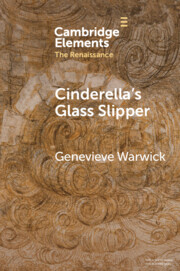Element contents
Cinderella's Glass Slipper
Published online by Cambridge University Press: 03 October 2022
Summary
- Type
- Element
- Information
- Series: Elements in the RenaissanceOnline ISBN: 9781009263948Publisher: Cambridge University PressPrint publication: 20 October 2022

